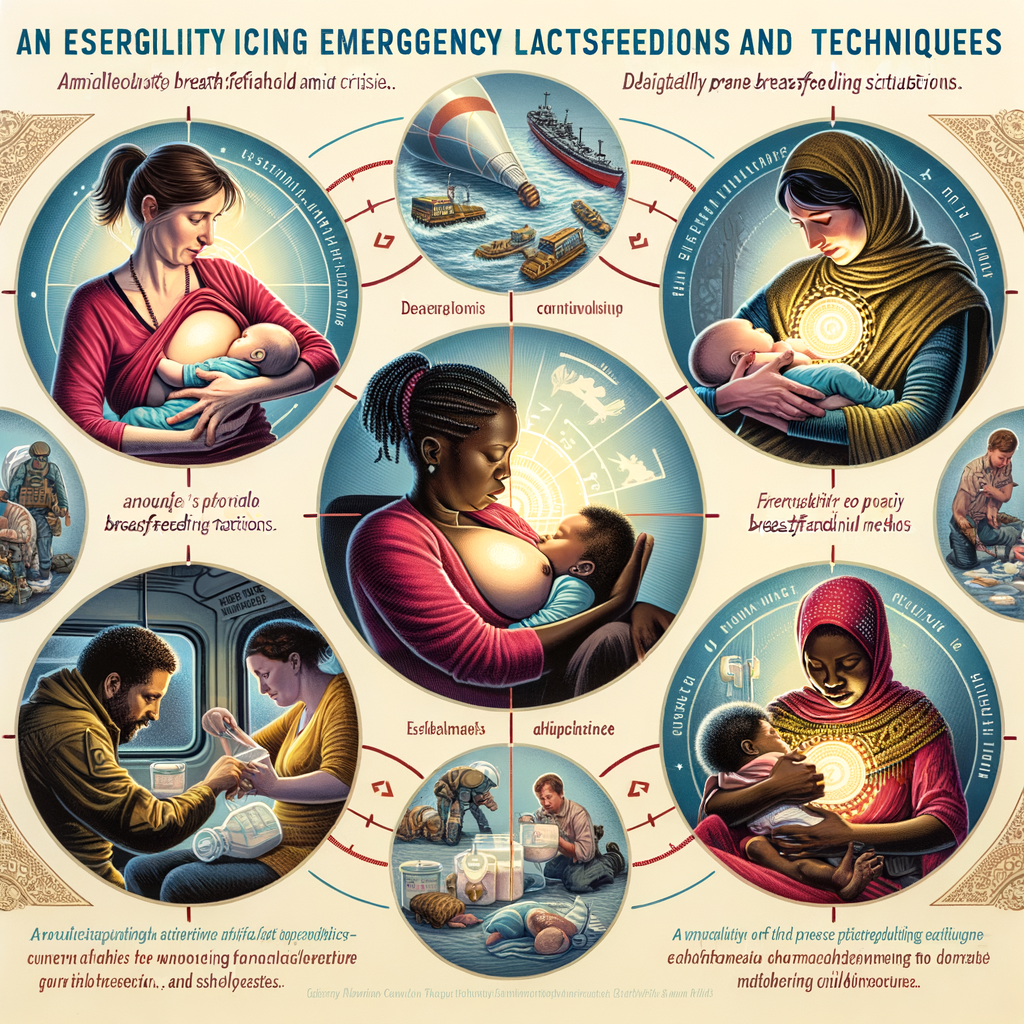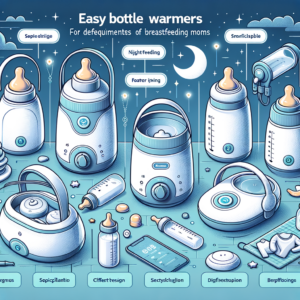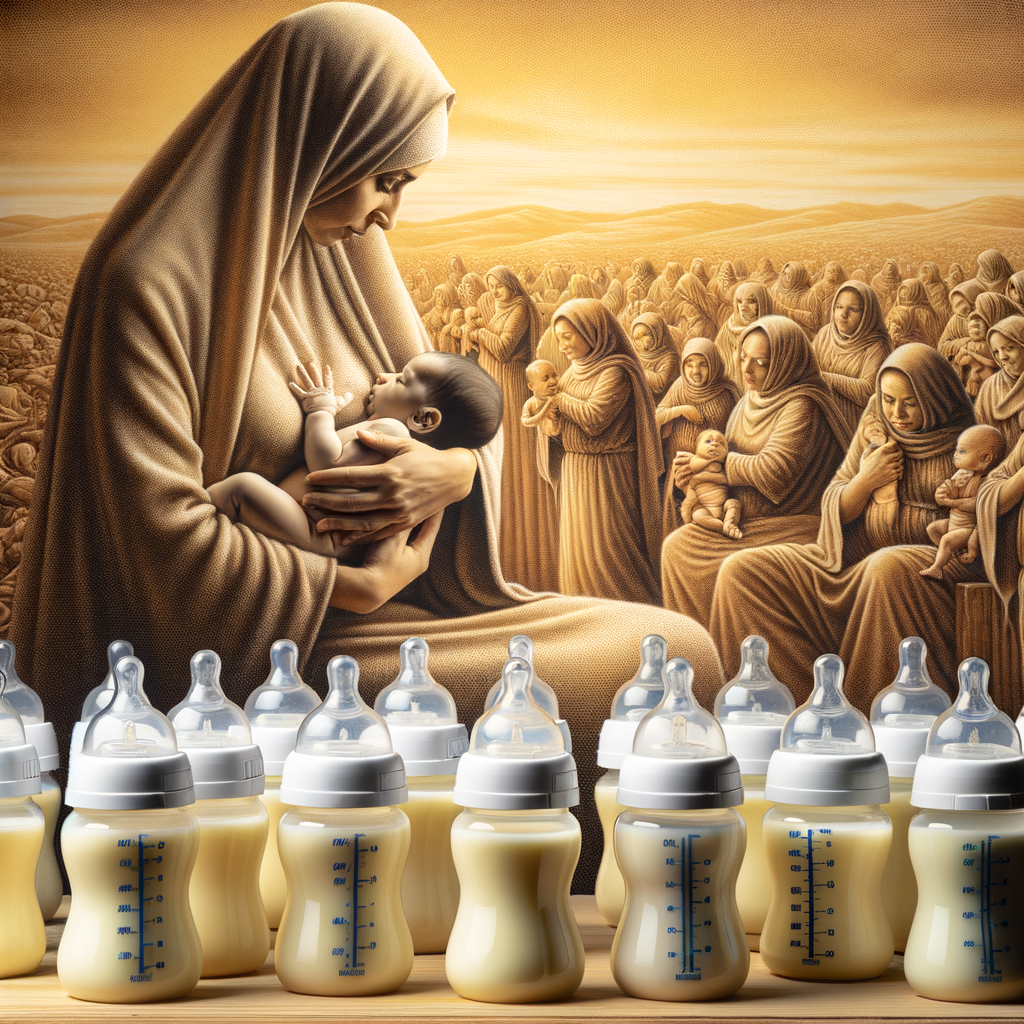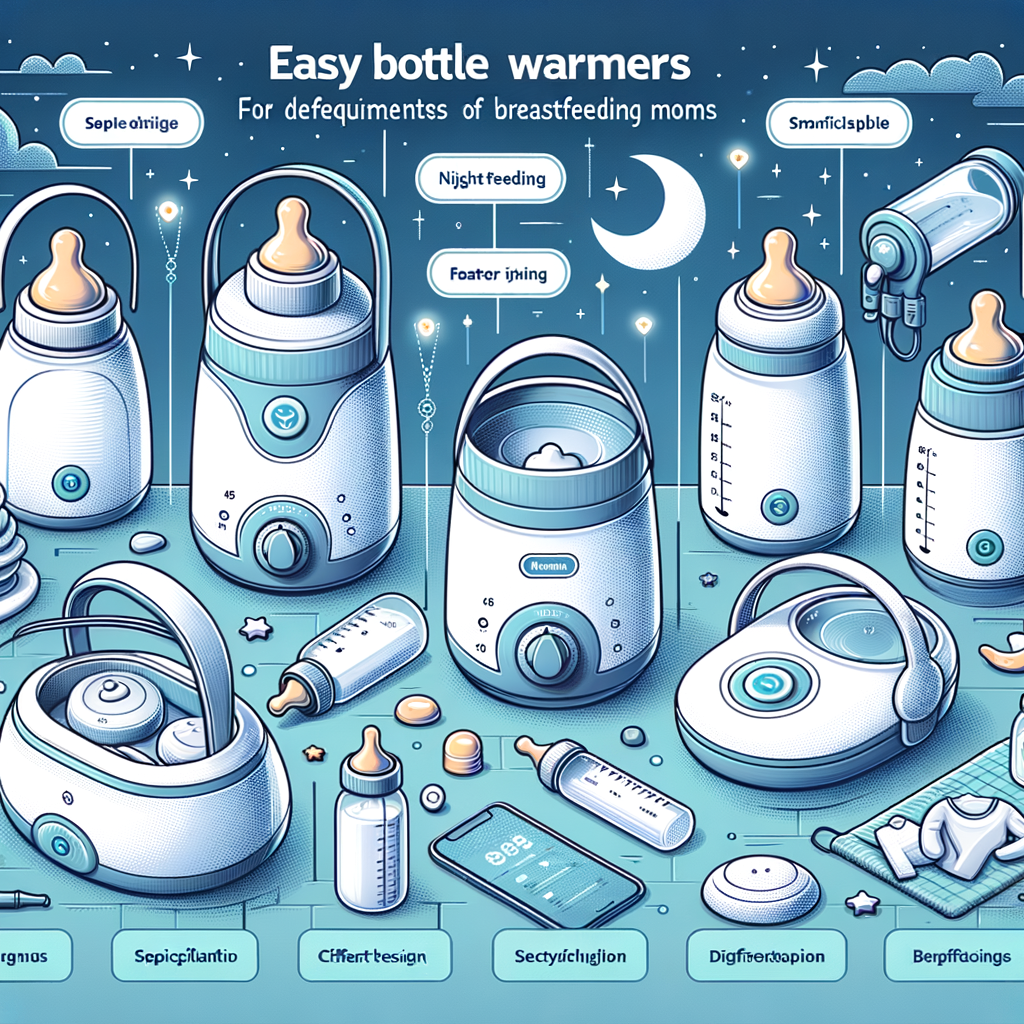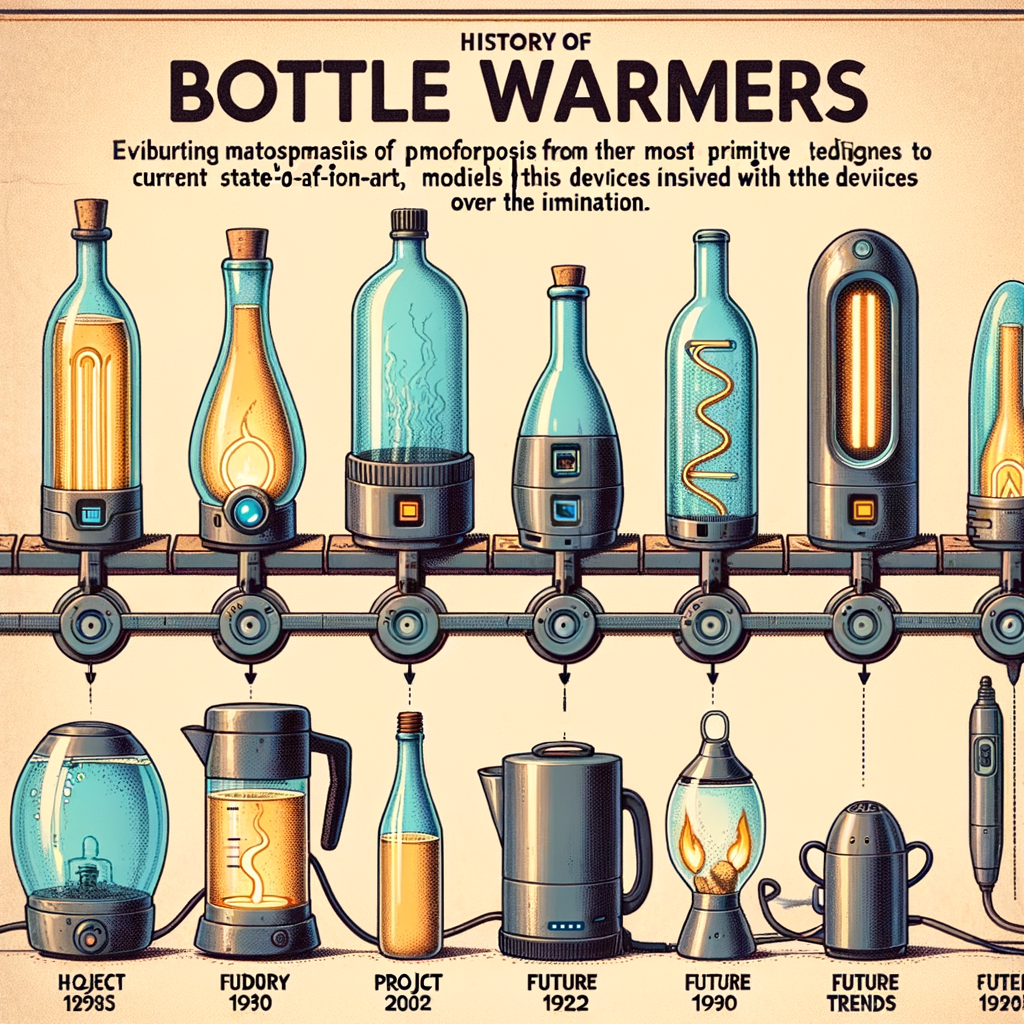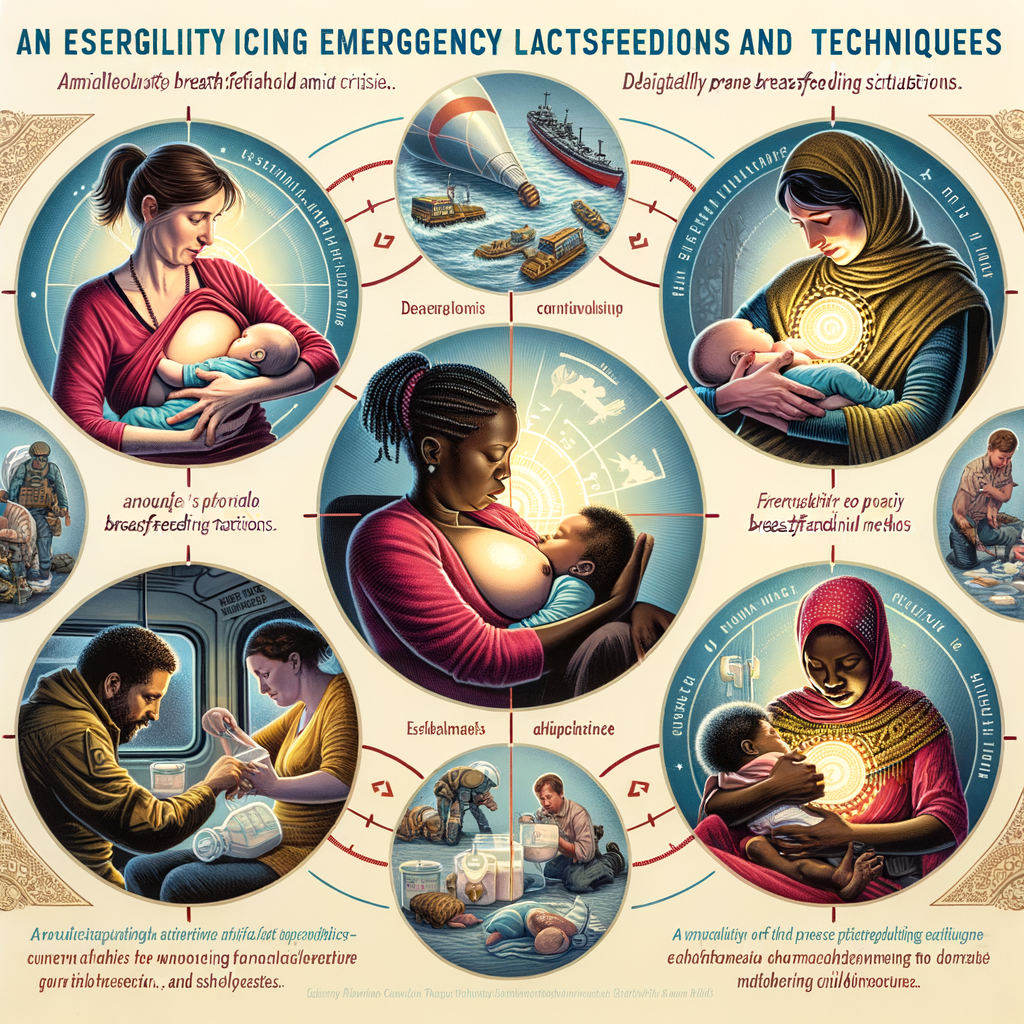
Introduction to Emergency Breastfeeding Solutions
When emergencies strike, the normal routines of life are disrupted, and this includes the feeding patterns of infants. In such situations, breastfeeding becomes even more crucial. This article aims to shed light on the importance of breastfeeding in emergencies, the challenges mothers face, and the need for innovative solutions.
- Understanding the importance of breastfeeding in emergencies
- Challenges faced by mothers during crisis situations
- The need for innovative breastfeeding methods
Breastfeeding is a vital aspect of infant care, especially in emergencies. It provides the necessary nutrients for a baby’s growth and development. More importantly, breast milk contains antibodies that help protect infants from common childhood illnesses. In crisis situations, where access to clean water and nutritious food may be limited, breastfeeding can be a lifesaver.
Despite the importance of breastfeeding, emergencies can make it difficult for mothers to continue this practice. Stress, malnutrition, and lack of privacy are just some of the challenges they face. In addition, there may be misinformation about breastfeeding, leading to confusion and fear. These challenges highlight the need for support and accurate information for mothers during crisis situations.
Given these challenges, there is a pressing need for innovative solutions to support breastfeeding in emergencies. These could include lactation support programs, breastfeeding-friendly spaces in emergency shelters, and education campaigns to dispel myths and misinformation. Such initiatives can help ensure that even in the midst of crisis, infants receive the nutrition they need to thrive.
In the following sections, we will delve deeper into these topics, exploring the various emergency lactation solutions and innovative breastfeeding methods that can be employed during crisis situations. We will also share some case studies and examples to illustrate these points further.
Understanding Breastfeeding in Crisis Situations
In times of crisis, breastfeeding can become a challenge. However, it’s important to understand these challenges to ensure the health of both the mother and the baby. Let’s delve into the physical challenges that can arise.
Physical Challenges
Physical challenges can significantly affect a mother’s ability to breastfeed during a crisis. These challenges can be broadly categorized into three areas:
- Impact of Stress on Lactation
- Nutritional Challenges for the Mother
- Environmental Factors Affecting Breastfeeding
Stress can have a direct impact on lactation. In a crisis situation, the body’s response to stress can inhibit the production of prolactin, a hormone essential for milk production. A study conducted in 2017 revealed that mothers who experienced high levels of stress produced less milk compared to those with lower stress levels.
A mother’s nutrition plays a crucial role in her ability to produce milk. During a crisis, access to nutritious food can be limited, leading to a decrease in milk production. It’s important for mothers to consume a balanced diet, rich in proteins, vitamins, and minerals, to maintain their milk supply.
The environment can also pose challenges to breastfeeding. In crisis situations, mothers may not have access to clean and safe spaces to breastfeed, or the necessary tools to store and prepare milk. Additionally, extreme weather conditions can make breastfeeding more difficult.
Understanding these physical challenges can help in finding effective solutions to ensure successful breastfeeding during crisis situations. The next section will explore the psychological challenges that can also impact breastfeeding.
Psychological Challenges
When it comes to breastfeeding in crisis situations, we must not overlook the psychological challenges. These can be just as impactful as the physical ones. Let’s delve into two key psychological aspects: emotional stress and the importance of mental health support.
- Emotional Stress and its Impact on Breastfeeding
Emotional stress can significantly affect a mother’s ability to breastfeed. When a mother is under severe stress, her body may produce less milk. A study conducted by the American Psychological Association found that stress can reduce the production of breast milk by up to 20%.
Furthermore, stress can also affect the quality of the milk. High levels of stress hormones can enter the milk, potentially affecting the baby’s mood and health. Therefore, it’s crucial for mothers to manage their stress levels for successful breastfeeding.
- Importance of Mental Health Support
Mental health support plays a vital role in successful breastfeeding, especially in crisis situations. A mother who feels supported is more likely to overcome the challenges of breastfeeding. This support can come from family, friends, healthcare professionals, or support groups.
According to a report by the World Health Organization, mothers who receive mental health support are more likely to continue breastfeeding for the recommended six months. This support can help reduce stress and anxiety, making the breastfeeding journey smoother and more enjoyable for both mother and baby.
In conclusion, addressing the psychological challenges is crucial for successful breastfeeding in crisis situations. By managing emotional stress and ensuring adequate mental health support, we can help mothers provide the best nutrition for their babies even in the most challenging circumstances.
Emergency Lactation Solutions
When faced with a crisis situation, it’s crucial to have a plan in place for breastfeeding. Here are some effective emergency lactation solutions that can help.
- Use of Lactation Aids
- Importance of Hydration and Nutrition
- Relaxation Techniques to Aid Lactation
Lactation aids can be a real lifesaver in emergency situations. They are designed to stimulate milk production and aid in the breastfeeding process. Examples of these aids include nursing supplements, breast pumps, and nipple shields. Nursing supplements can help increase milk supply, while breast pumps can help extract milk when direct breastfeeding is not possible. Nipple shields, on the other hand, can help with latch-on issues and sore nipples.
Hydration and nutrition play a vital role in lactation. Drinking plenty of water helps maintain your milk supply. It’s recommended to drink at least 8 cups of water a day. Nutrition-wise, a balanced diet rich in proteins, whole grains, fruits, and vegetables can help boost milk production. Foods like oats, spinach, and almonds are known to be lactogenic, meaning they can help increase milk supply.
Stress can negatively impact milk production. Hence, relaxation techniques can be beneficial in emergency lactation situations. Techniques such as deep breathing, meditation, and yoga can help reduce stress and promote relaxation, thereby aiding in lactation. Even simple activities like listening to calming music or taking a warm bath can help.
In conclusion, emergency lactation solutions involve the use of lactation aids, maintaining good hydration and nutrition, and practicing relaxation techniques. By incorporating these strategies, you can effectively manage breastfeeding in crisis situations.
Innovative Breastfeeding Methods
When it comes to breastfeeding, there’s no one-size-fits-all solution. Every mother and baby are unique, and what works for one may not work for another. That’s why it’s crucial to explore innovative breastfeeding methods that can help ensure successful feeding and bonding. Let’s delve into some alternative feeding techniques that have proven to be effective for many mothers.
Alternative Feeding Techniques
Here are three alternative feeding techniques that can be beneficial for mothers who may have difficulty with traditional breastfeeding methods:
- Expressing Milk Manually: Manual expression of breast milk is an age-old technique that can be particularly useful when the baby is having trouble latching or the mother is experiencing engorgement. This method involves using your hand to massage and compress the breast to release milk. It’s a skill that requires practice, but once mastered, it can be a convenient and cost-effective way to ensure your baby gets the nourishment they need.
- Use of Breast Pumps: Breast pumps are devices that allow mothers to express milk when they are away from their baby or when the baby is unable to nurse directly. They come in various types, including manual, battery-operated, and electric models. Using a breast pump can help maintain milk supply, relieve engorgement, and provide a way for partners to participate in feeding.
- Supplemental Nursing Systems: A supplemental nursing system (SNS) is a method of feeding a baby with both breast milk and a supplement, without using a bottle. The supplement, which can be expressed breast milk, formula, or donated breast milk, is delivered through a small tube attached to the mother’s nipple. This method can be beneficial for babies who need additional nutrition or for mothers who wish to stimulate their milk production while feeding their baby.
Remember, the best breastfeeding method is the one that works for you and your baby. Don’t hesitate to try different techniques and seek professional advice if you’re having difficulties. With patience and persistence, you can find the method that makes breastfeeding a rewarding experience for both of you.
Support Systems
When it comes to breastfeeding in emergency situations, having a robust support system is crucial. This can include lactation consultants, peer support groups, and online resources and forums. Let’s delve into these support systems in more detail.
- Role of Lactation Consultants
- Peer Support Groups
- Online Resources and Forums
Lactation consultants are professionals who specialize in breastfeeding. They are trained to help mothers overcome common breastfeeding challenges, such as latching difficulties or low milk supply. In emergency situations, a lactation consultant can provide valuable guidance and support to ensure the baby’s nutritional needs are met. They can also teach innovative breastfeeding methods suitable for the situation.
Peer support groups are another essential part of the support system. These groups consist of other mothers who are going through or have gone through similar experiences. They provide a platform for sharing experiences, tips, and emotional support. In an emergency, these groups can be a source of comfort and practical advice.
The internet is a vast resource for breastfeeding information. There are numerous websites, blogs, and forums dedicated to breastfeeding where mothers can find advice, support, and answers to their questions. In an emergency situation, these resources can provide immediate access to information and advice. They can also connect mothers with experts and other parents facing similar challenges.
In conclusion, a strong support system is vital for successful breastfeeding in emergency situations. Whether it’s a lactation consultant, a peer support group, or an online forum, these resources can provide the necessary guidance and support to ensure the baby’s nutritional needs are met.
Breastfeeding Solutions for Emergencies
When emergencies strike, it can be a challenging time for everyone, especially for breastfeeding mothers. It’s crucial to have a plan in place and know what resources are available to ensure the health and well-being of both mother and child. This section will cover emergency preparedness for breastfeeding mothers, creating a breastfeeding emergency kit, and key resources for support during emergencies.
-
Emergency Preparedness for Breastfeeding Mothers
Preparation is key when it comes to managing emergencies. Breastfeeding mothers should have a plan in place that includes a safe and comfortable place to breastfeed, a supply of clean water for hydration, and access to nutritious food. It’s also important to have a support system in place, whether it’s family, friends, or a lactation consultant, to provide help and advice during this challenging time.
-
Creating a Breastfeeding Emergency Kit
Having a breastfeeding emergency kit can be a lifesaver during emergencies. This kit should include items like a manual breast pump, clean bottles and nipples, a cooler for storing milk, and sanitizing wipes. It’s also a good idea to include a list of emergency contact numbers, such as your doctor or a lactation consultant.
-
Key Resources for Support During Emergencies
There are several resources available for breastfeeding mothers during emergencies. Organizations like the American Academy of Pediatrics and the World Health Organization provide guidelines and advice for breastfeeding during emergencies. Local health departments and hospitals often have lactation consultants who can provide support and advice. It’s also important to reach out to your personal support network during this time for emotional support and practical help.
In conclusion, emergencies can be a challenging time for breastfeeding mothers, but with preparation and the right resources, it’s possible to continue to provide your baby with the vital nutrition they need. Remember, your health and well-being are just as important, so don’t hesitate to reach out for help and support.
Lactation Support in Emergencies
In times of crisis, providing essential support for breastfeeding mothers becomes a crucial responsibility. This section will focus on the role of healthcare providers in offering lactation support during emergencies.
Role of Healthcare Providers
Healthcare providers play a pivotal role in ensuring the health and well-being of mothers and infants during emergencies. Their responsibilities primarily revolve around two key areas:
- Providing Lactation Support in Emergency Settings
- Training for Healthcare Providers
Healthcare providers are the first line of support for breastfeeding mothers during emergencies. They are tasked with ensuring that mothers can continue to breastfeed safely and effectively. This involves assessing the mother’s health, providing necessary nutritional advice, and addressing any breastfeeding difficulties. For instance, in the aftermath of a natural disaster, healthcare providers might need to help mothers maintain lactation when they are under stress or malnourished.
Proper training for healthcare providers is essential to ensure they can provide effective lactation support in emergency situations. This includes understanding the basics of lactation, the benefits of breastfeeding, and the potential challenges that mothers might face. Training programs often cover topics like how to assist with latch-on difficulties, how to recognize and treat common breastfeeding issues like mastitis, and how to provide emotional support to stressed mothers.
In conclusion, healthcare providers play an indispensable role in supporting lactation during emergencies. Their knowledge, skills, and compassion can make a significant difference in the lives of breastfeeding mothers and their infants during challenging times.
Community Support
When it comes to providing emergency lactation support, the community plays a crucial role. Let’s explore how community initiatives and non-profit organizations contribute to this cause.
- Community Initiatives for Lactation Support
Community initiatives are vital in providing lactation support during emergencies. These initiatives often involve local groups, organizations, and individuals who come together to support breastfeeding mothers. They provide resources, such as breastfeeding clinics, lactation consultants, and peer support groups.
For example, in a small town, a community initiative might organize a weekly meeting for breastfeeding mothers. Here, they can share their experiences, learn from each other, and receive support from trained lactation consultants. This kind of initiative can make a significant difference in a crisis situation, ensuring mothers have the support they need to continue breastfeeding.
- Role of Non-Profit Organizations
Non-profit organizations also play a key role in providing lactation support during emergencies. These organizations often have the resources and networks to provide large-scale support. They can offer a range of services, from providing breastfeeding supplies to organizing training sessions for healthcare providers.
For instance, a non-profit organization might distribute breast pumps and other breastfeeding supplies to mothers in a disaster-stricken area. They might also organize training sessions for healthcare providers, teaching them how to support breastfeeding mothers in crisis situations.
In conclusion, community initiatives and non-profit organizations play a vital role in providing lactation support during emergencies. They ensure that mothers have the resources and support they need to continue breastfeeding, even in the most challenging circumstances.
Emergency Breastfeeding Techniques
When emergencies strike, mothers may find themselves in situations where they need to adapt their breastfeeding techniques. This section will discuss some of the emergency breastfeeding techniques that can be used in such situations.
- Techniques for expressing milk in emergencies
- Safe storage of breast milk during crises
- Feeding the baby in challenging conditions
Expressing milk can be a challenge during emergencies, especially when you don’t have access to your usual tools. Hand expression is a technique that can be used in these situations. It involves using your hand to stimulate milk production and collect it in a clean container. This method is simple and can be done anywhere, making it a valuable skill for emergencies. Remember to wash your hands thoroughly before expressing to ensure the milk remains safe for your baby.
Storing breast milk safely during a crisis is crucial. If refrigeration is not available, freshly expressed milk can be kept at room temperature for up to six hours. However, it’s best to feed your baby as soon as possible. In case you need to store the milk for longer, consider using a cooler with ice packs. This can keep the milk cool for up to 24 hours. Always use a clean, sealed container for storage and label it with the date and time of expression.
Feeding your baby in challenging conditions can be stressful. However, remember that breastfeeding is more than just a meal – it’s a moment of comfort and connection. Try to find a quiet, comfortable place to feed your baby, even if it’s not ideal. If direct breastfeeding is not possible, you can feed your baby with the expressed milk using a clean spoon or cup. Remember, your baby’s health and nutrition are paramount, so do whatever it takes to ensure they get their essential nourishment.
In conclusion, emergencies can pose challenges to breastfeeding, but with the right techniques and knowledge, you can ensure your baby continues to receive the vital nutrition they need. Remember, every drop of breast milk counts, so don’t be discouraged if things don’t go as planned. Your effort and dedication are what truly matters.
Innovative Breastfeeding in Crisis
When emergencies strike, innovative solutions are needed to ensure the well-being of mothers and infants. One such solution is breastfeeding, a natural and effective method of providing infants with the nutrients they need. In this section, we will look at some case studies that highlight the importance and success of breastfeeding in crisis situations.
Case Studies
Here are some real-life examples of how innovative breastfeeding methods have helped in crisis situations.
- Success stories of breastfeeding in crisis situations
- Lessons learned from past emergencies
In 2010, Haiti was hit by a devastating earthquake. Amidst the chaos, a group of mothers were able to successfully breastfeed their infants, despite the lack of resources. They relied on their bodies’ natural ability to produce milk, ensuring their infants received the necessary nutrients. This not only helped the infants survive but also strengthened the bond between mother and child during a difficult time.
The 2004 tsunami in Indonesia taught us valuable lessons about breastfeeding in crisis situations. Many mothers were separated from their infants in the chaos, leading to a significant decrease in breastfeeding. This resulted in a rise in infant malnutrition and illness. The lesson learned was clear: in emergencies, it is crucial to prioritize mother-infant bonding to ensure the continuation of breastfeeding.
These case studies highlight the importance of breastfeeding in crisis situations. They show us that even in the face of adversity, the natural bond between a mother and her child can provide a lifeline. As we continue to face global challenges, let’s remember the power of breastfeeding and the need for innovative solutions to support it.
Emergency Solutions for Lactation
When emergencies strike, breastfeeding mothers may face unique challenges. However, with proper planning and support, these challenges can be overcome. Let’s explore some of the key solutions for lactation during emergencies.
-
Developing a Lactation Plan for Emergencies
Creating a lactation plan in advance can be a lifesaver during emergencies. This plan should include strategies for maintaining milk supply, storing breast milk safely, and feeding the baby. It’s also important to consider potential obstacles, such as power outages or lack of access to clean water, and plan accordingly. For instance, mothers can invest in a manual breast pump and learn how to hand-express milk.
-
Importance of Continuous Lactation Support
Continuous lactation support is crucial during emergencies. Support from trained professionals can help mothers navigate challenges and continue breastfeeding. This support can come from lactation consultants, healthcare providers, or breastfeeding support groups. Remember, breastfeeding not only provides the best nutrition for babies, but it also offers emotional comfort during stressful times.
-
Future Directions for Emergency Lactation Solutions
As we move forward, it’s important to continue developing and improving emergency lactation solutions. This includes creating more accessible lactation resources, training more healthcare professionals in lactation support, and advocating for policies that support breastfeeding mothers during emergencies. By doing so, we can ensure that all mothers are able to nourish their babies, even in the most challenging circumstances.
In conclusion, while emergencies can pose challenges for breastfeeding mothers, there are solutions available. By developing a lactation plan, seeking continuous support, and advocating for better resources, mothers can continue to provide their babies with the best possible nutrition.

